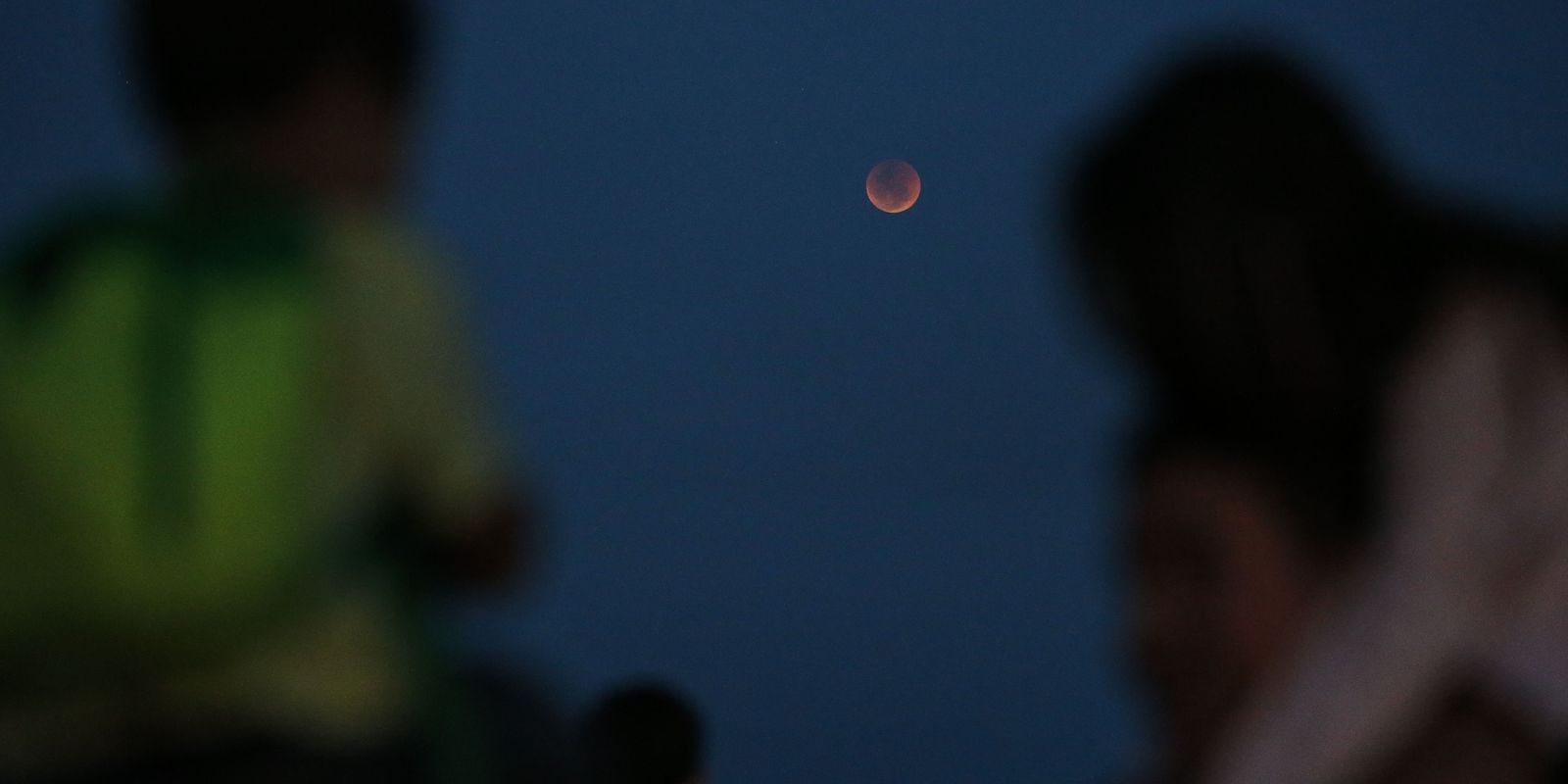This Tuesday (8) the total lunar eclipse and the appearance of the Blood Moon take place. It is the second lunar eclipse of the year, but it will be visible as a total only in the extreme west of Brazil.
Only observers living in the westernmost part of the country will be able to see the partial eclipse, with the moon already setting. And only in the extreme west of Acre will it be visible as a total for just a few minutes, also with the moon already setting.
The beginning of the penumbral phase will be at 5:02 am (Brasilia time). A second band of Brazil, which includes the South Region, much of the Southeast and Center-West, will be seeing the Moon (almost setting) throughout the penumbral phase, but no difference in its luminosity will be noticed in this phase.
The partial phase starts at 6:09 am (Brasilia time) and will be visible in Amazonas, Acre, much of Pará, Amapá, Rondônia, Roraima, part of Mato Grosso and part of Mato Grosso do Sul. The further west, the greater the coverage of the Moon in this partial phase.
The full phase will start at 7:17 am (Brasília time) and will only be visible in the far west of Acre. The eclipse maximum will occur at 7:59 am and the total phase will end at 8:42 am. The end of the partial eclipse will be at 9:49 and the end of the penumbral at 10:50.
According to the astronomer and manager of the Division of Communication and Popularization of Science (Dicop) of the National Observatory, Josina Nascimento, in the total eclipse the moon acquires a reddish color, and this occurs because even fully immersed in the umbra (the dark shadow of the Earth ), the Moon still receives sunlight indirectly through the Earth’s atmosphere.
“White light from the Sun penetrates the atmosphere and the blue and violet parts are dispersed by atmospheric gases and the colors closer to red can pass through more easily”, explains Josina.
The eclipse will be seen as total in the northeastern part of Europe, Asia, Australia, North and Central America, the northwestern part of South America, the Atlantic and Indian Pacific Oceans and the Arctic.
The next total lunar eclipse will only occur on the night of March 13 to 14, 2025 and will be seen throughout Brazil.
Heaven in your home
Starting at 5:30 am this Tuesday, the National Observatory will launch a new edition of the project Heaven at home: remote observationwith broadcast on youtube to show the eclipse in all its phases, in real time.
The channel will show images of where the eclipse will be seen in full, depending only on weather conditions. In addition to displaying the eclipse, astronomers who are part of the project will talk to the public about astronomy, astrophysics, telescopes and obtaining astronomical images, as is traditionally done in face-to-face public observations.
















